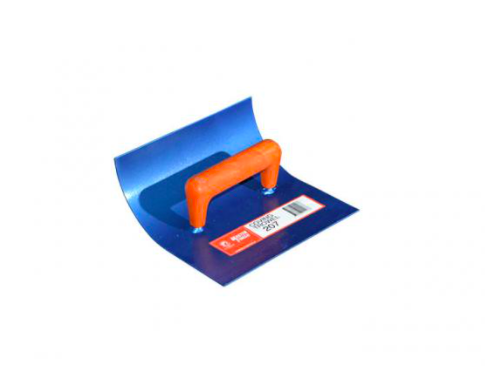Coving Trowel A.G. Pulie
Used to form a cove where a wall and floor meet. The 201 coving has a traditional use in ‘rubbing up’ the setting concrete prior to steel trowelling.
If the concrete is left with the finish created by the coving trowel, i.e. a more textured finish than a steel trowelled finish, this is known as a coving finish or ‘stipple’ finish.
Sizes:
12 X 95 X 25 - 203
Width: 95mm
Radius: 12mm
Height: 25mm
25 X 145 X 32 - 202
Width: 145mm
Radius: 25mm
Height: 32mm
25 X 145 X 70 - 201
Width: 150mm
Radius: 25mm
Height: 70mm
75 X 140 X 90 - 207
Width: 190mm
Radius: 75mm
Height: 90mm
| Size | Gosford | Georgetown | Wyong Distribution |
|---|---|---|---|
| 201 | 2 | 4 | 0 |
| 202 | 1 | 2 | 0 |
| 203 | 1 | 2 | 0 |
| 207 | 1 | 2 | 0 |
Used to form a cove where a wall and floor meet. The 201 coving has a traditional use in ‘rubbing up’ the setting concrete prior to steel trowelling.
If the concrete is left with the finish created by the coving trowel, i.e. a more textured finish than a steel trowelled finish, this is known as a coving finish or ‘stipple’ finish.
Sizes:
12 X 95 X 25 - 203
Width: 95mm
Radius: 12mm
Height: 25mm
25 X 145 X 32 - 202
Width: 145mm
Radius: 25mm
Height: 32mm
25 X 145 X 70 - 201
Width: 150mm
Radius: 25mm
Height: 70mm
75 X 140 X 90 - 207
Width: 190mm
Radius: 75mm
Height: 90mm

